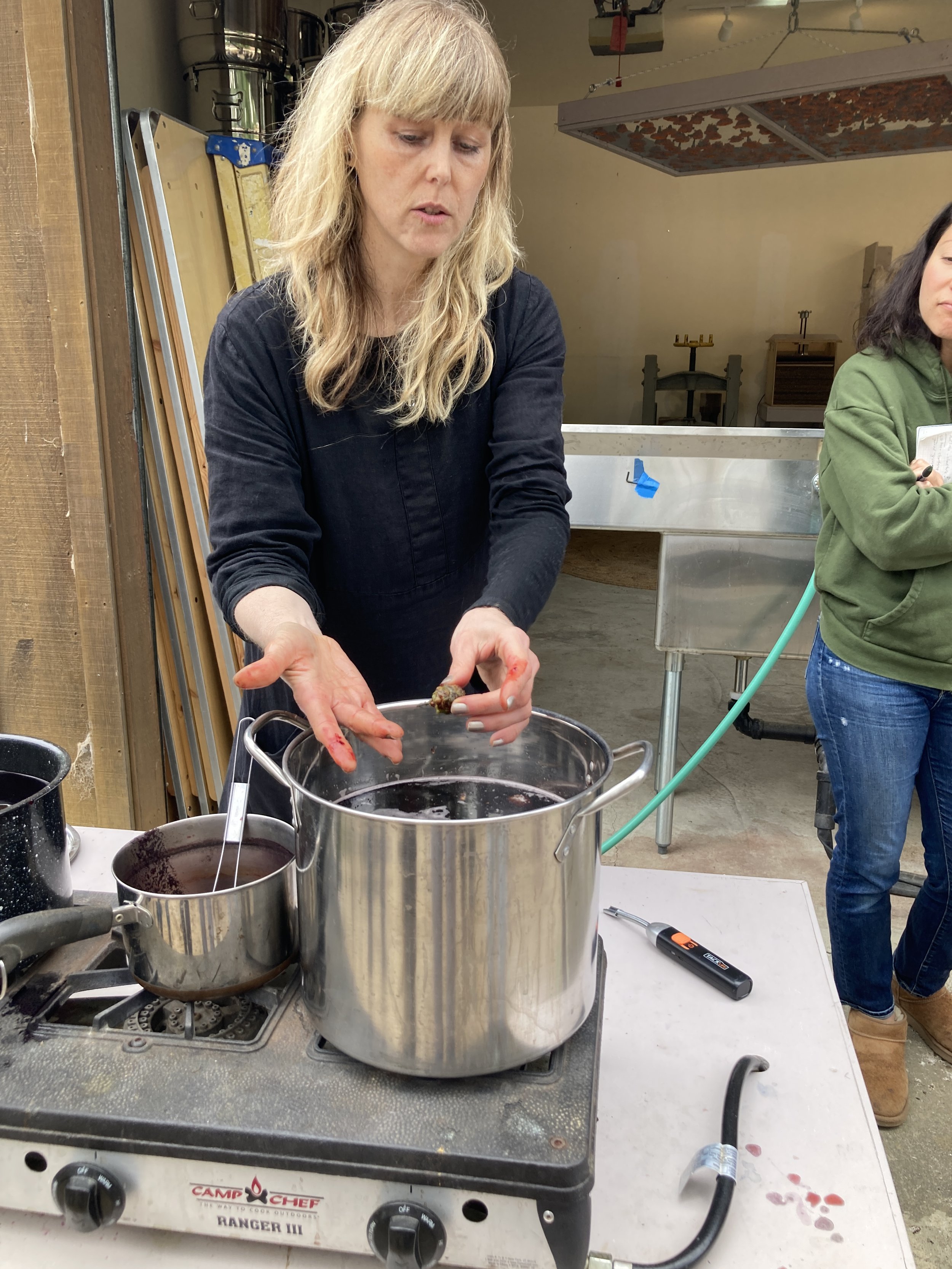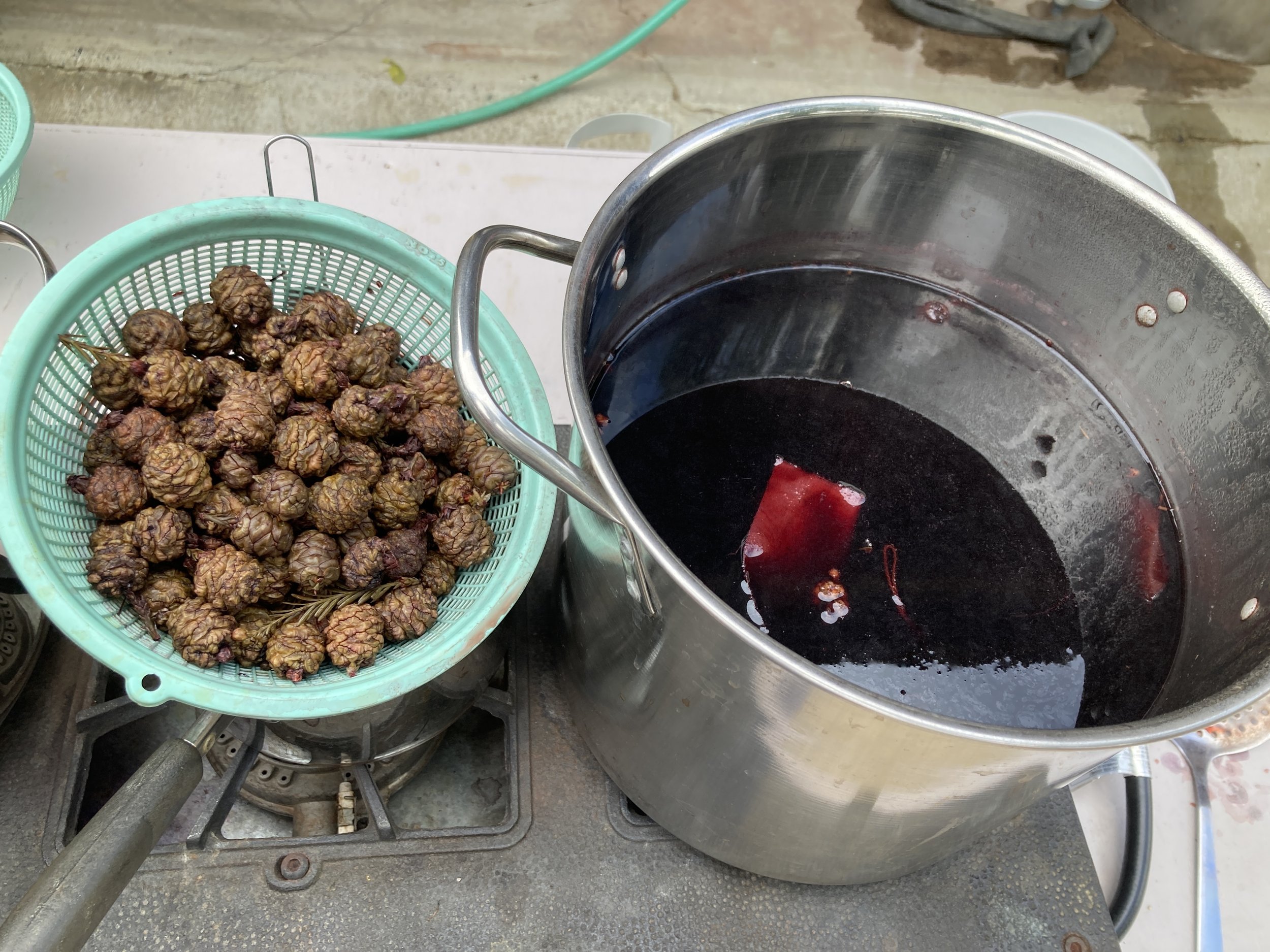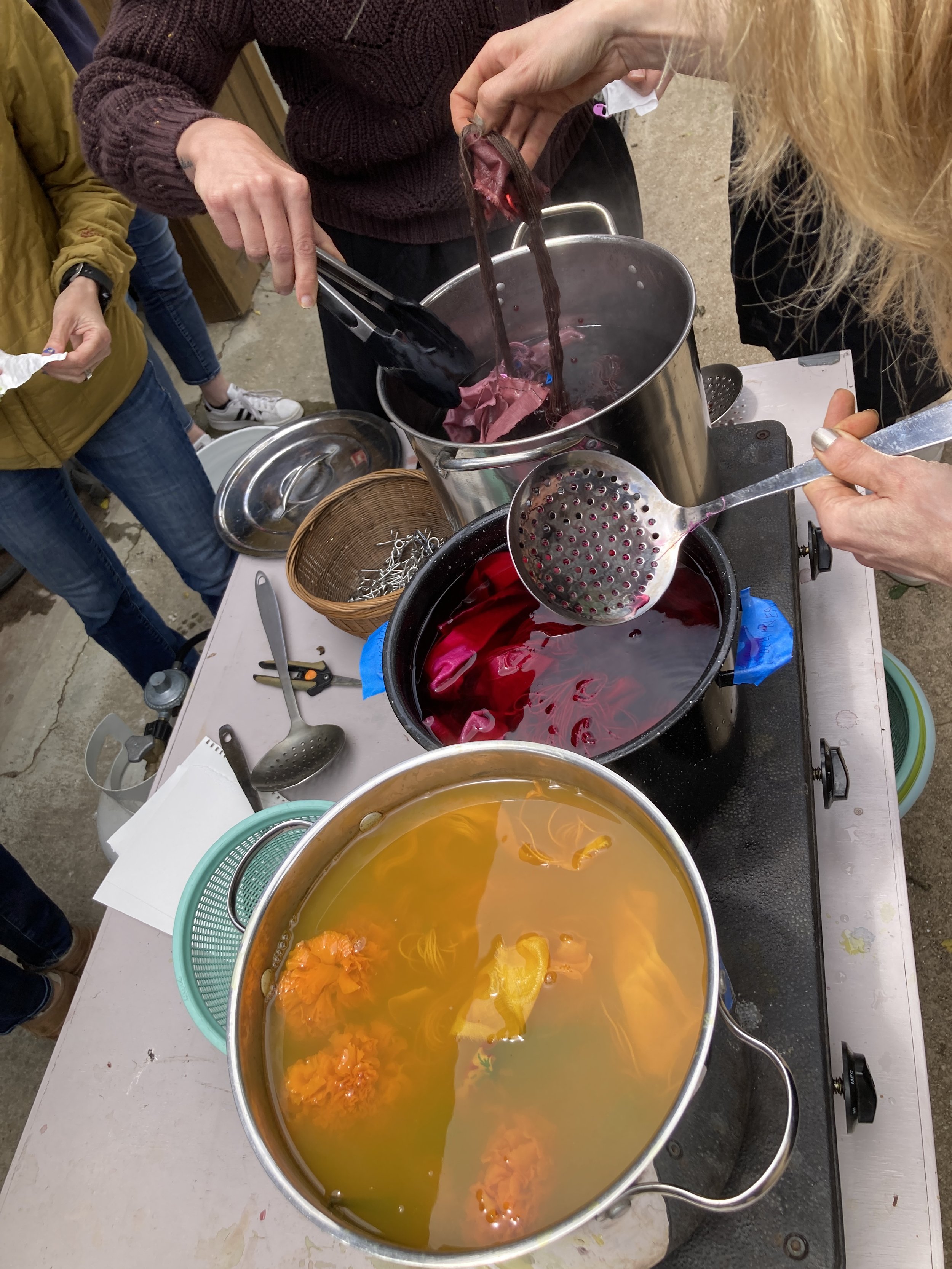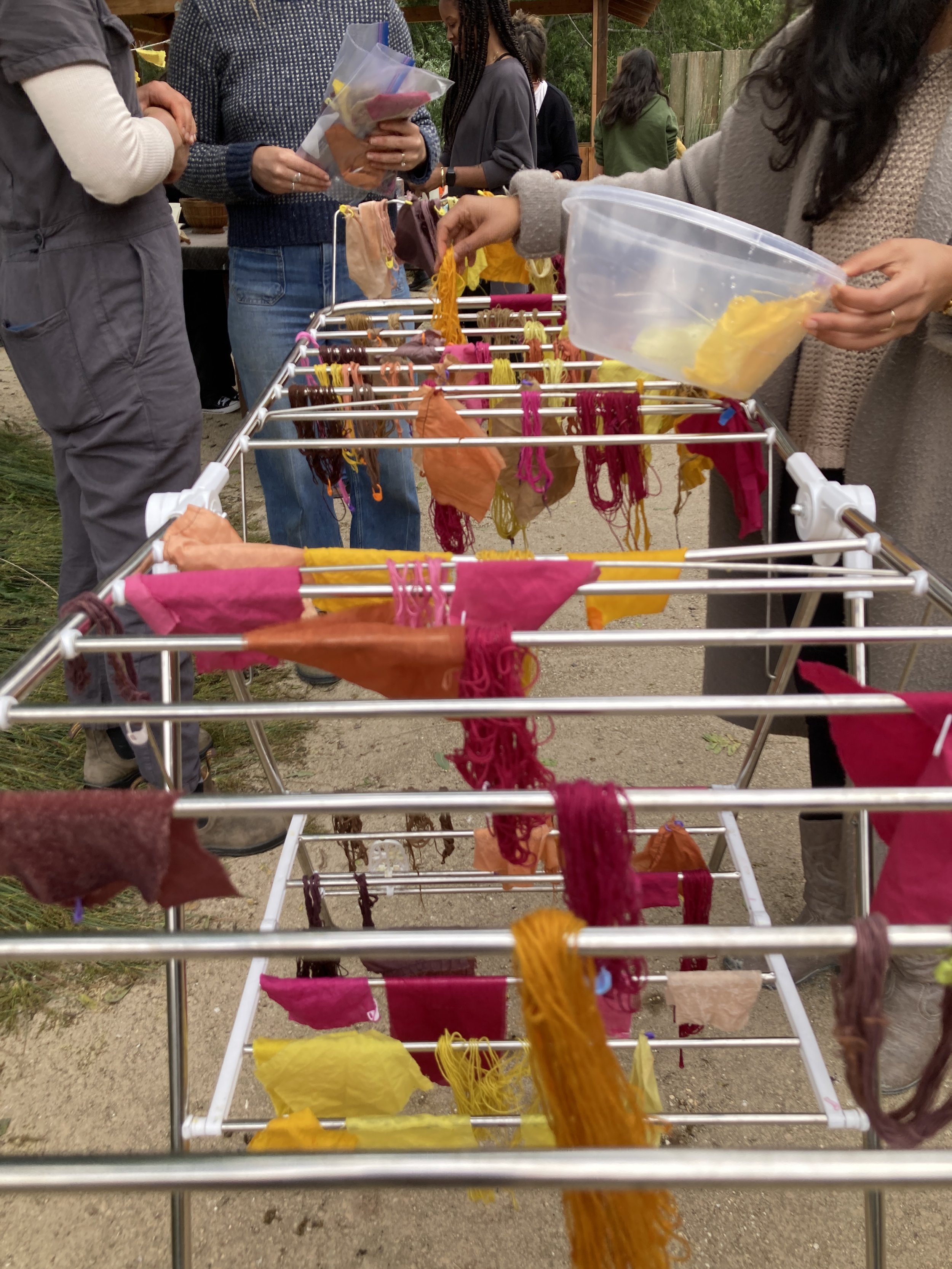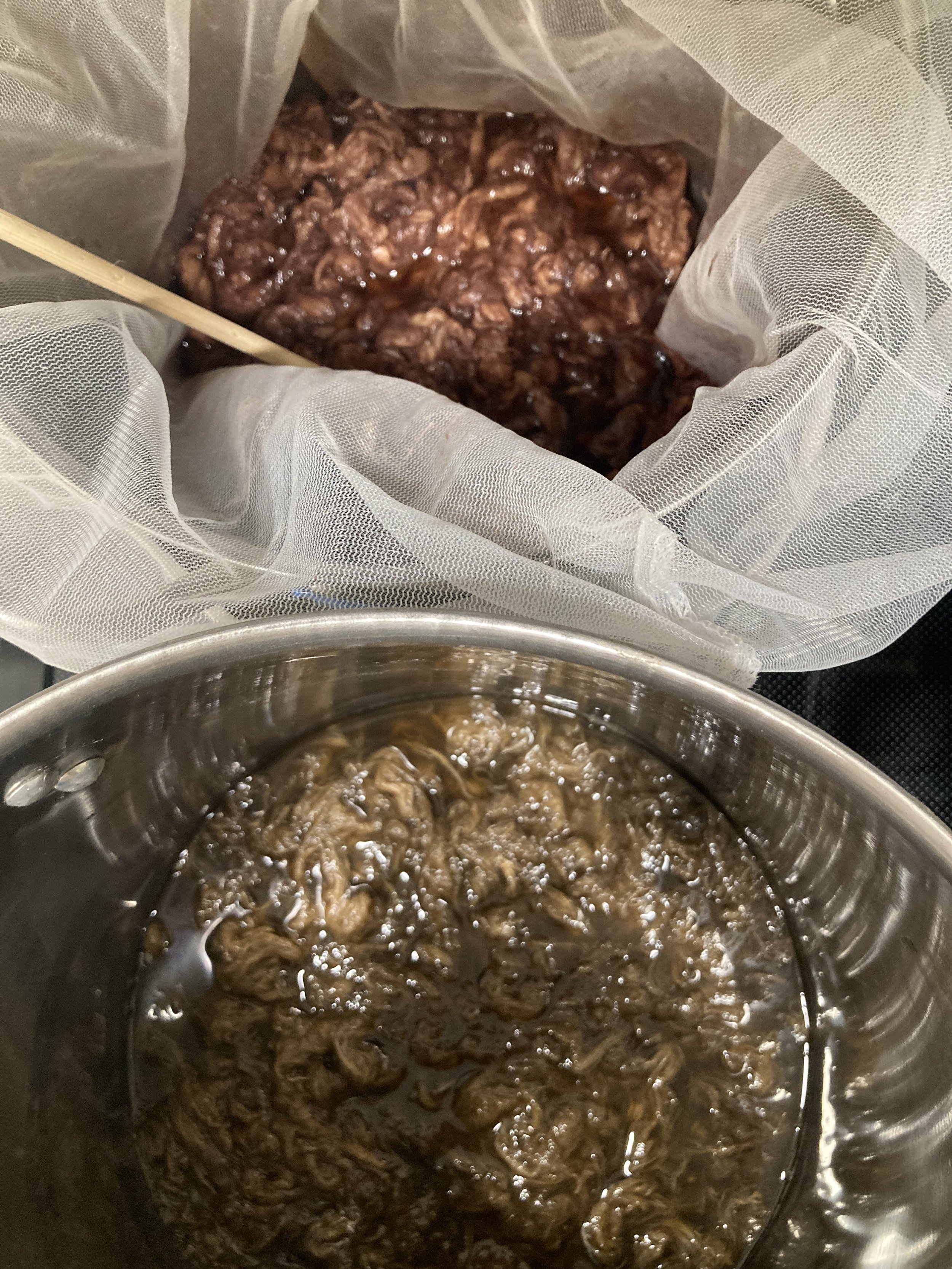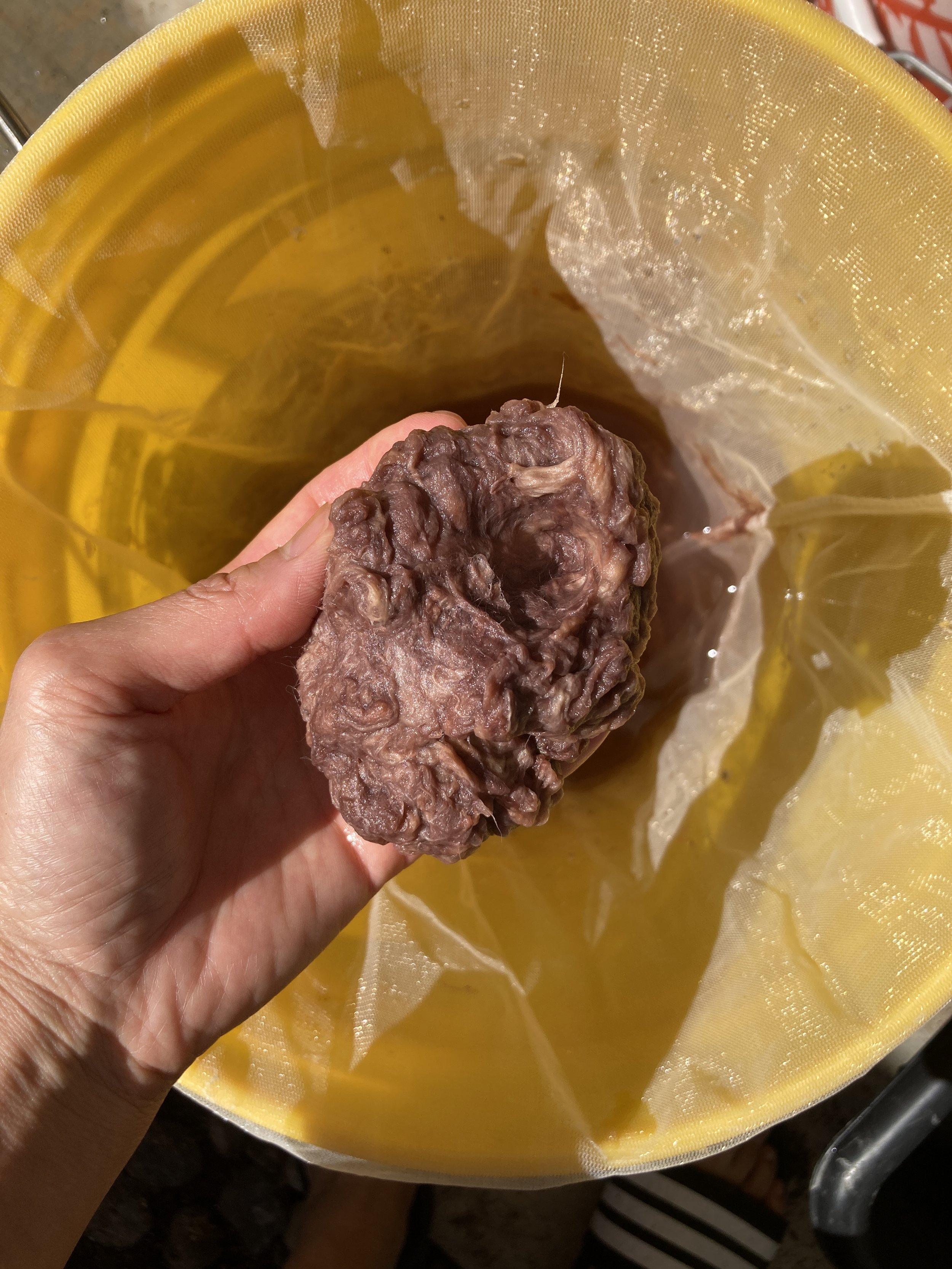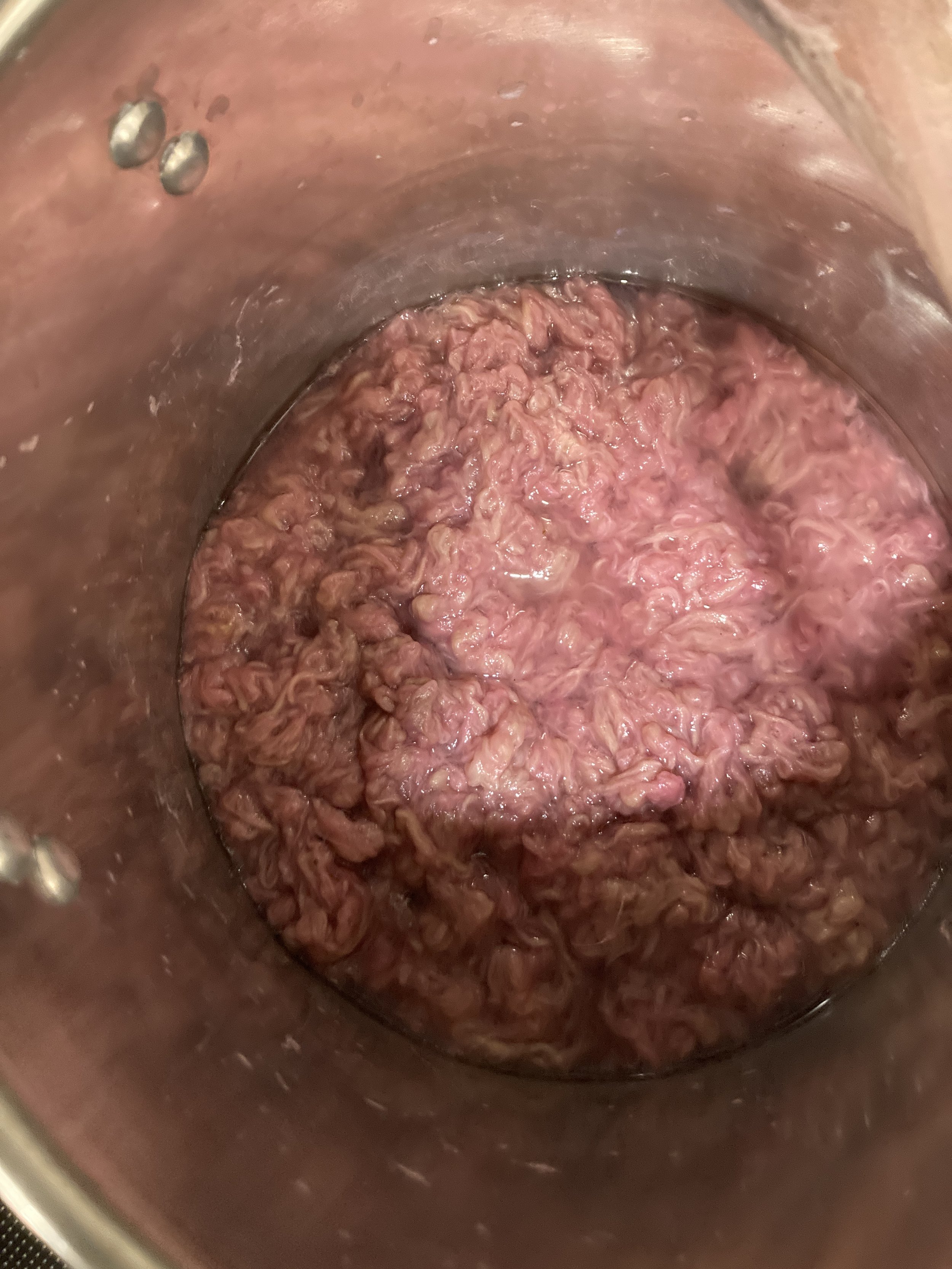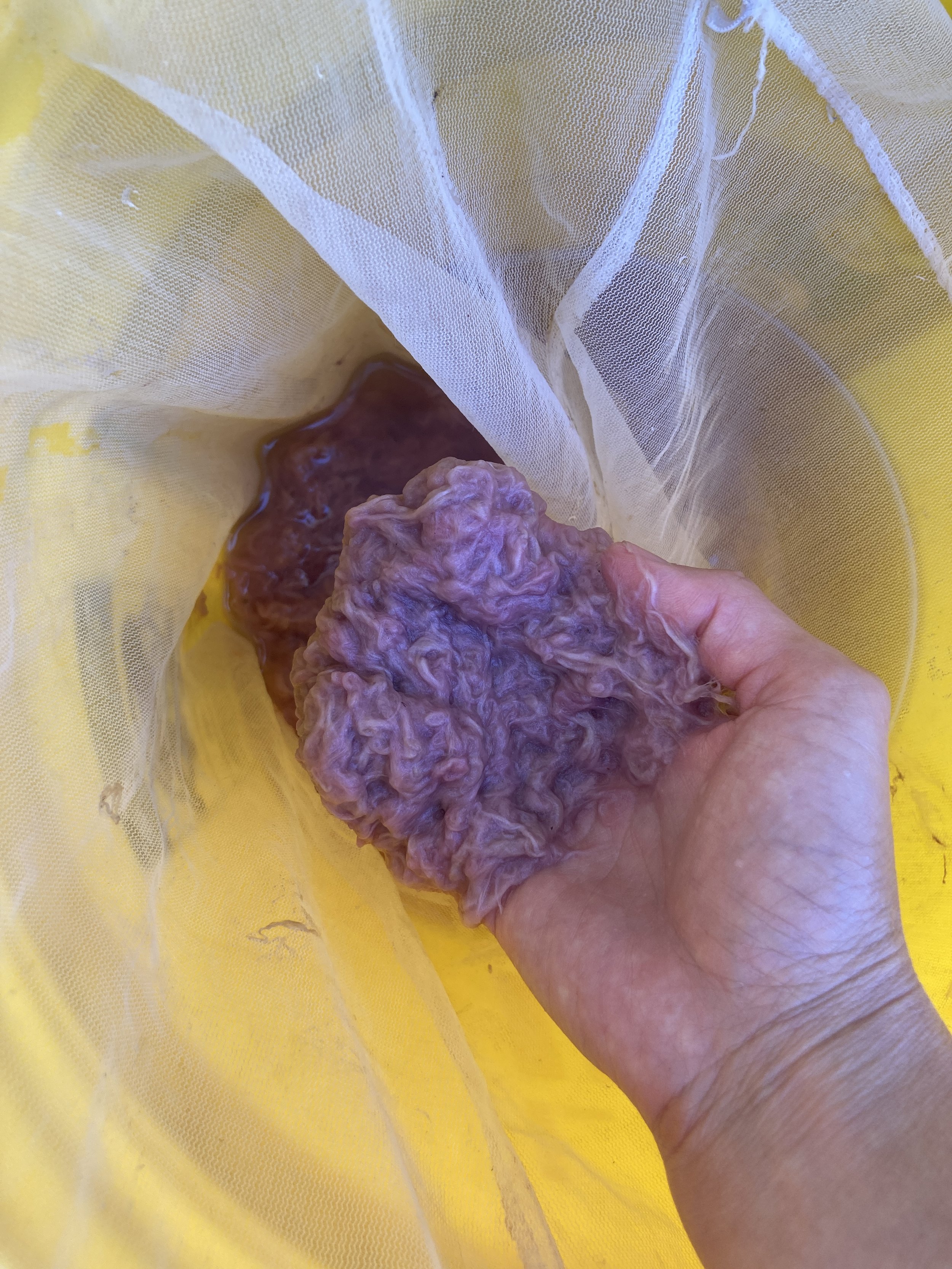Last month I had the opportunity to take a natural dye workshop at Fibershed, a wonderful non-profit org that I learned about from my papermaking friend and colleague Michelle Wilson. I was excited to learn about harvesting plants for color, and particularly wanted to learn about the native plants here in California that could be used for papermaking and dyeing. After spending some time at Fibershed, I realized I have barely scratched the surface and have a long way to go in my exploration.
The instructor’s dyed samples
Our teachers, Heidi and Allison, were both founding and/or early members of Fibershed and knew a ton about natural dyeing. We started by looking at Heidi’s samples and dye journal. I had brought some paper that was made at the hanji workshop the day before, and was excited to create color samples on hanji.
After looking at samples, we took a walk around the beautiful grounds. I was inspired by the instructors' knowledge of all the different plants and how to harvest them for color. We walked by rows of Japanese indigo plants, though we did not dye with indigo at the workshop.
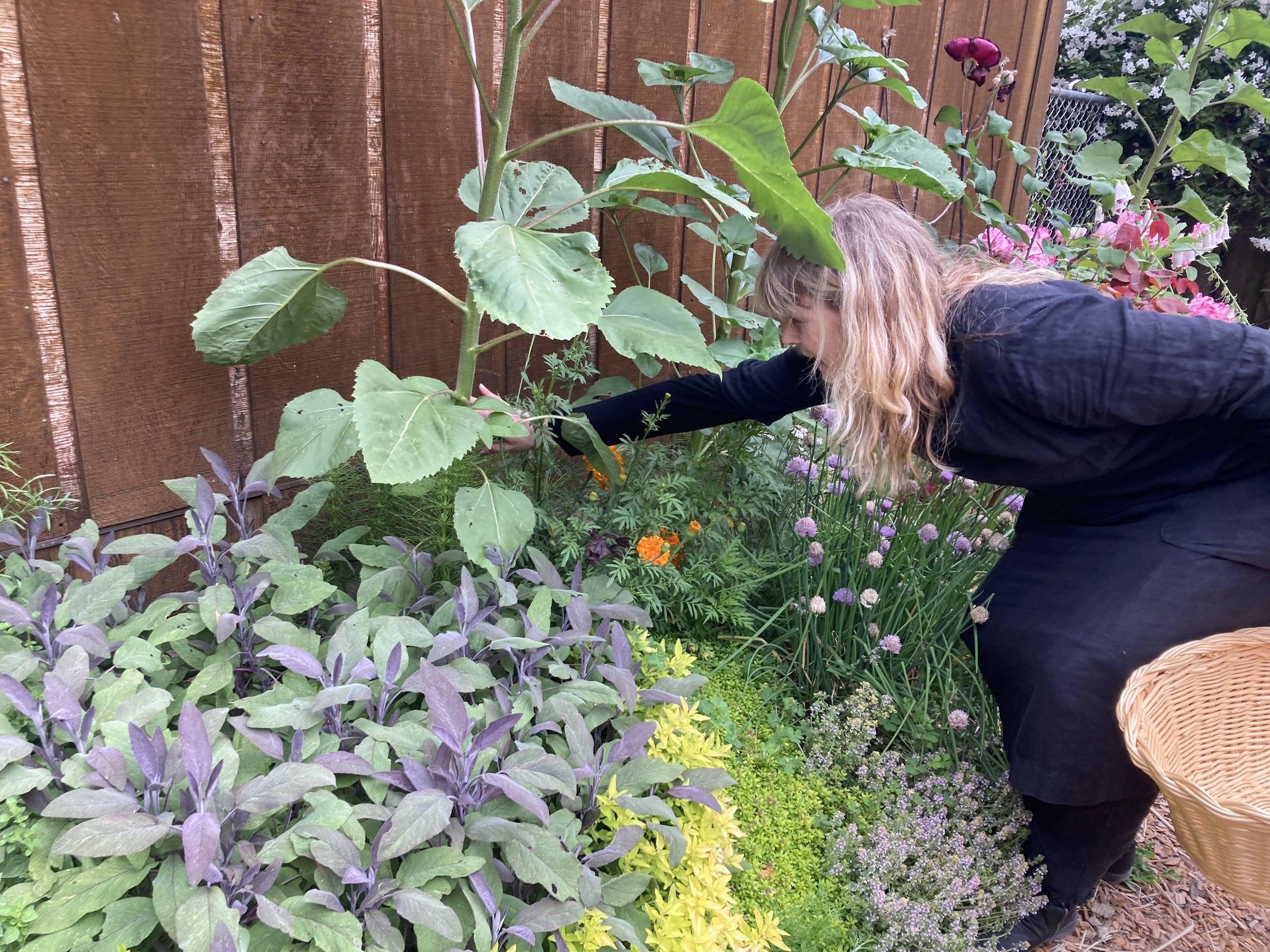
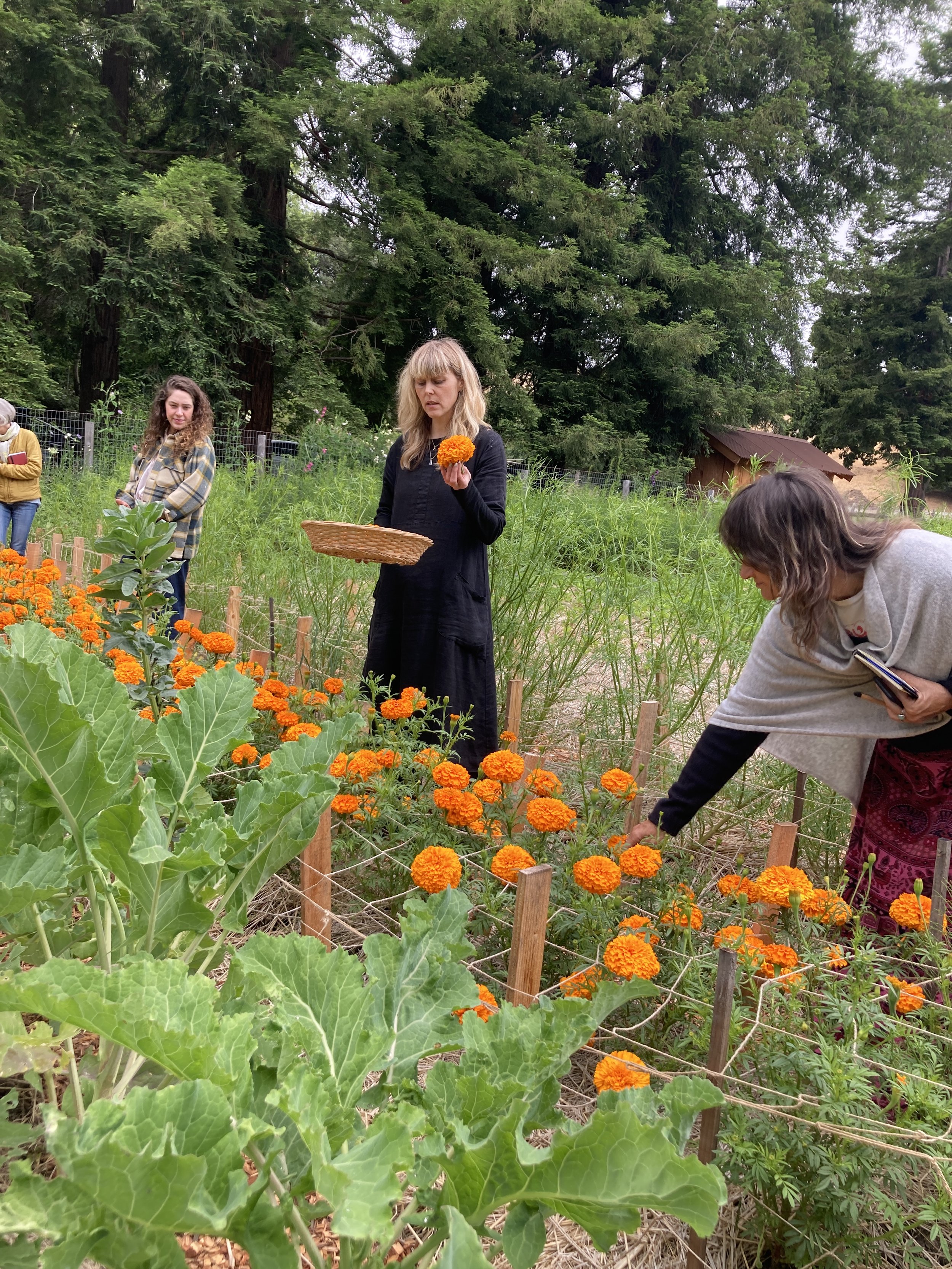
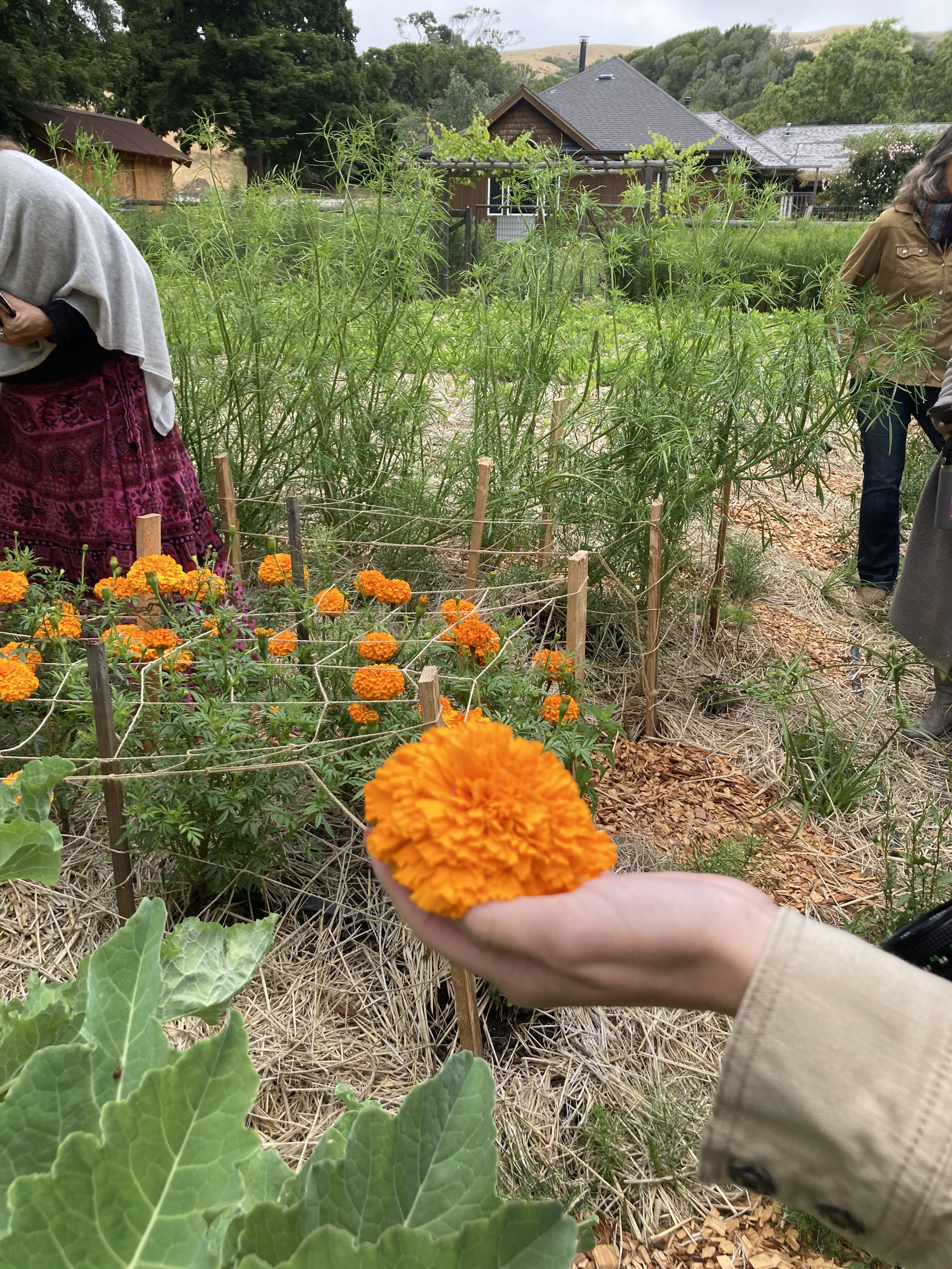
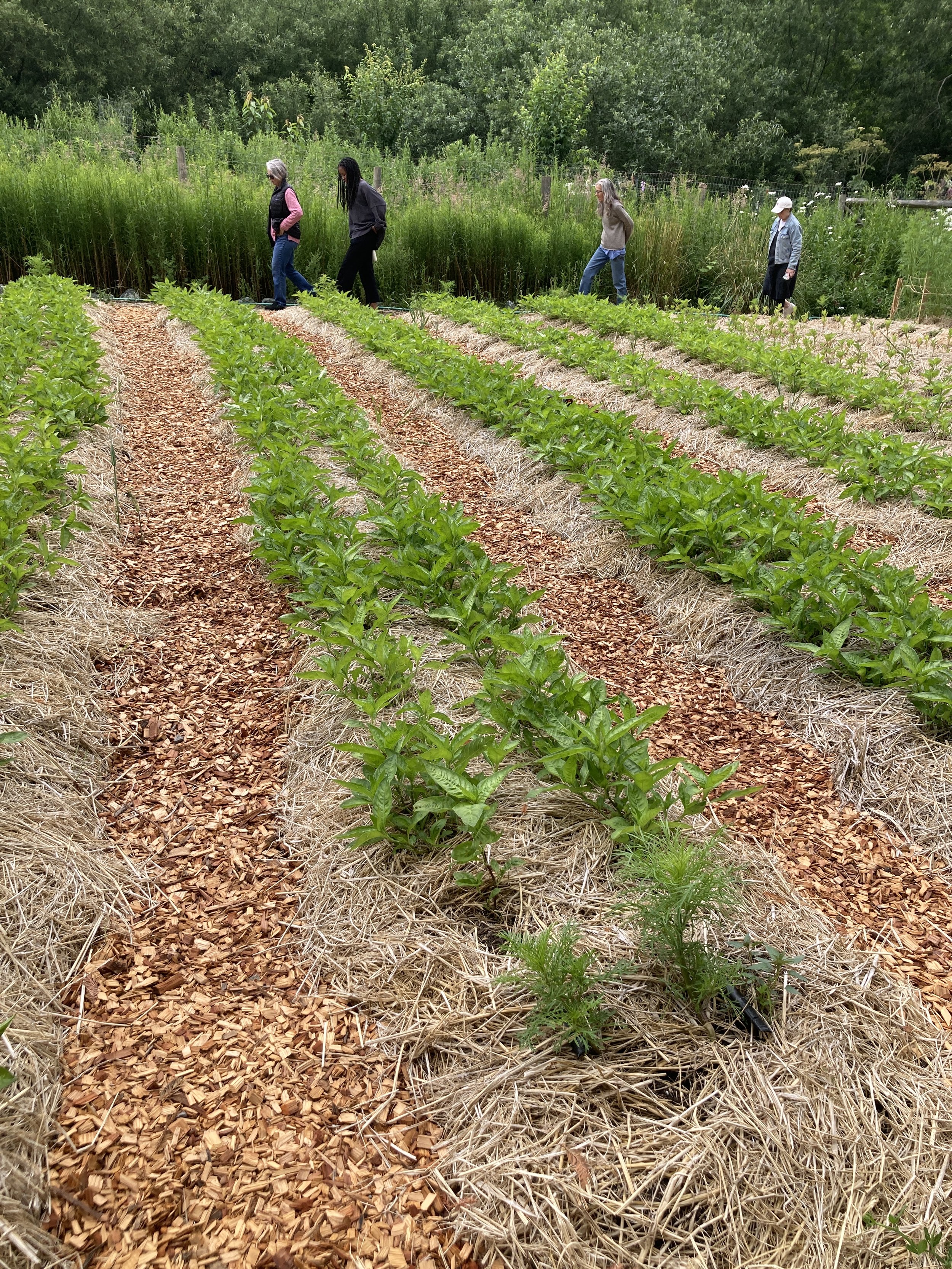
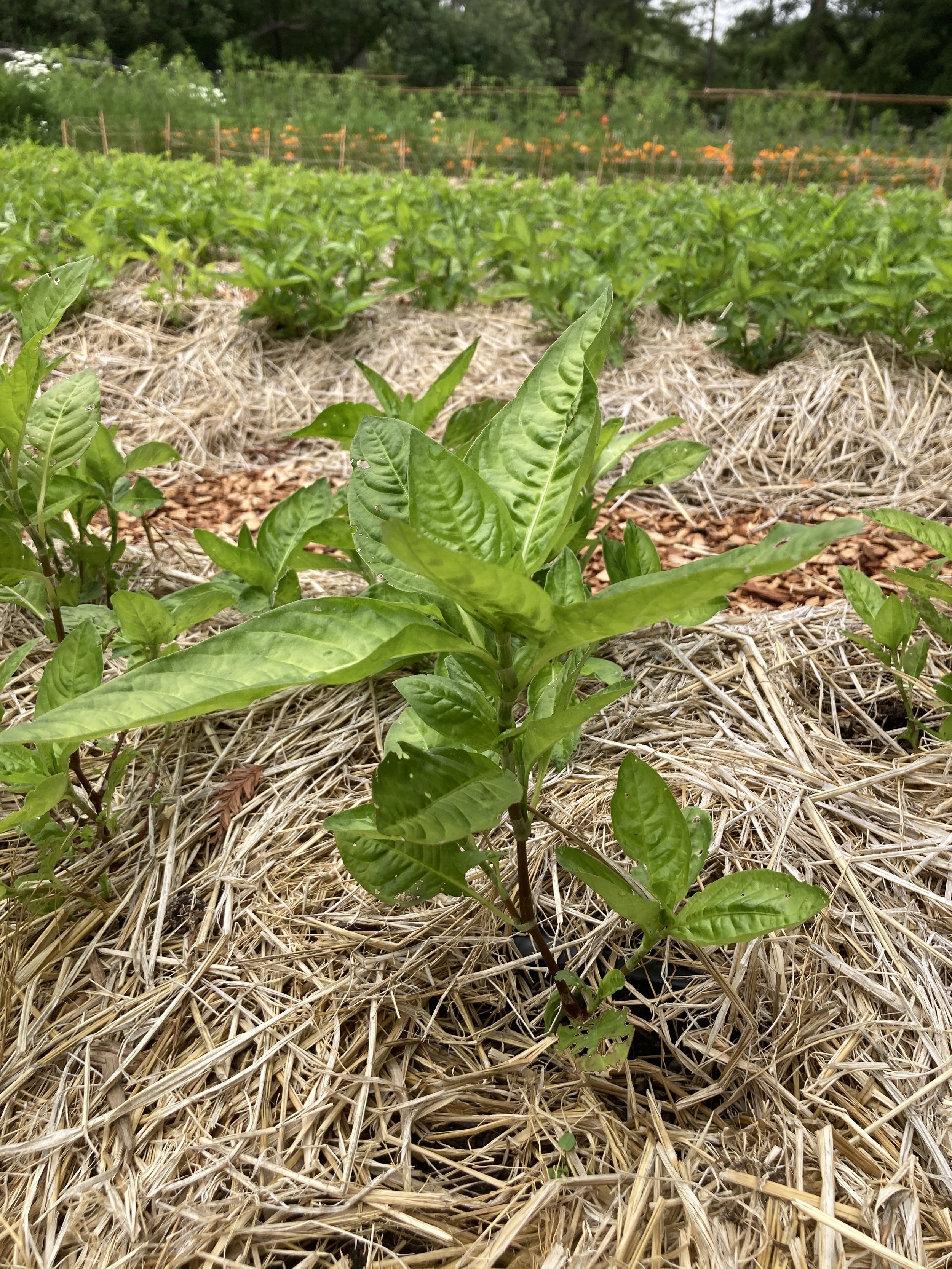
We came back to the main classroom area and the instructors worked on creating dye baths from the freshly cut plants. They also showed us the dye baths that they had previously prepared. There were 7 or 8 different dye baths; I was impressed by the instructor's excitement and eagerness to prepare many different colors, though I was also pretty overwhelmed by the number of dyes as well as different types of samples. They were quite challenging to keep track of and required careful labeling, color-coding, and note-taking. Altogether we dyed with acacia, marigold, cochineal, loquat leaves, horsetail, redwood cones, eucalyptus, and mugwort.
After lunch we began submerging our fabrics (and paper) into the various dye baths:
Workshop participants hanging their dyed samples to dry
It was a very windy day and somewhat damp and chilly. Another workshop participant also brought papers to dye; our colored samples billowed in the wind and took a bit of time to dry between applications:
At the end of the workshop the instructors allowed us to take home leftover dye. I eagerly took home a liter of each dye that produced the best results on my paper samples. Unfortunately after I got home, I was super busy and unable to use the dyes right away, and then traveled for 3 weeks. By the time I got back home, most of the dyes had gotten moldy. Still, I used a couple liters to dye some thai dak pulp in walnut leaf dye and redwood cone dye, as well as cochineal, in preparation for the upcoming hanji workshop.
It was super satisfying to know that so many local and native plants produce color. As for so many crafts with centuries of tradition, I wish I had more time to dedicate to deepening my knowledge of and experience with natural dyes. My hope is that this endeavor will happen organically as we settle into our home in Sac and establish a garden in our backyard. I also look forward to sharing this exploration with my kiddos.
My dyed paper, fabric, and thread samples from the workshop.
I was happy to turn off my instructor brain and allow myself to enjoy being a student, though the experience reiterated for me how much the labor and value of teaching workshops, on top of the vast expertise and years of experience that so many craft instructors carry and share, is figuring out working instructional methods and streamlining and preparing and balancing and creating a conducive learning environment, all within a limited timeframe. From personal experience I know that anything beyond the bare minimum (which is already a lot of labor) is pure gift. Deep bows of gratitude to Heidi and Allison, and all of my previous workshop and class instructors that I’ve ever learned from.

